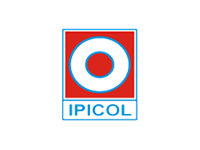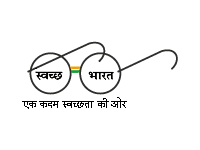Rationale:
Vector Borne Diseases like Malaria and Filaria pose immense public health concern and continue to be major causes of significant morbidity and mortality in the state. These diseases are prevalent both in rural and urban areas mostly among lower socio-economic groups of the population, the marginalized and disadvantaged. The dynamics of these diseases are largely determined by eco-epidemiological, socio-economic and water management systems. Children, young adults, representing economically productive sections and pregnant women are the most vulnerable groups, although all age groups are affected. However Dengue and Chikungunya are recently emerging diseases.
For malaria control Programme, out of 30 districts, 13 are covered under financial support from World Bank and 16 districts from GoI and state govt. to accelerate anti-malaria activities and improve delivery of services especially in remote and inaccessible pockets.
Objectives :
Government of India in its National Health Policy (2002) has pledged commitment to reduce mortality on account of malaria by 50% by 2010 & additional 10% by 2012 and efficient morbidity control and elimination of lymphatic filariasis (ELF) by 2015
Strategies:
Early Diagnosis and Complete Treatment (EDCT)
- To facilitate early diagnosis and complete treatments to malaria positive cases especially diagnosis of Pf cases through RDT and treatment with Artemesinin based combination therapy (ACT)
- Microscopic Centers to examine the blood slides at CHC, SDH and DHH level.
- Providing adequate anti malarial drugs, RDKs, microslides, pricking needles and other accessories.
- Establishment of FTD (Fever Treatment Depots) at village level
- Engagement of Van Samrakshan Samiti (VSS) animators as FTD in deep forest areas through community involvement and ensuring availability of antimalarial drugs and diagnostic tools with these functionaries.
- As a state intitaitive, Artesunate injection provided to referral hospitals for treatment of complicated malaria cases.
Integrated Vector Management (IVM)
- Indoor Residual Spray (IRS) twice in year during transmission season in selected high risk areas having API>5 with DDT 50% and SP 5%
- Distribution of Long Lasting Insecticidal Nets (LLIN) in high risk areas having API>2 in a cluster approach
- Impregnation of community owned bed nets with suitable insecticide.
- Biological control through larvivorous fish
- Elimination of vector breeding sources
Supporting strategies
- Capacity building of medical, para medical, NGO/CBO and community volunteers
- Suitable health communication programme and Public Partnership Initiative (PPP)
- Engagement of suitable manpower aditio
Activities:
EDCT (Early Diagnosis and Complete Treatment)
Establishment of FTD (Fever Treatment Depots), through community involvement and ensuring availability of antimalarial drugs to these functionaries. The new initiatives like ACT and Rapid Diagnostic Kits (RDK) have been introduced. These are being used in high endemic villages with poor health and communication infrastructure. Establishment sentinel surveillance sites at DHH/SDH/CHC to monitor Pf trend , treatment of severe and complicated malaria
IVM (Integrated Vector Management)
IRS:
Indoor Residual Spray (IRS) is an important measure for transmission risk reduction. This is being applied selectively in high risk pockets with DDT & synthetic pyrethroids. Emphasis has been given to meticulously follow the microplans, advance intimation to community, training of personnel and adequate supervision.
LLIN/ITN
In order to reduce man mosquito contact, use of LLIN / treated bed nets with suitable insecticide which has knock down and repellant effect has been introduced in the project. LLIN have been first time introduced in 2009-10 in Orissa and so far 18.99 lakh LLINs have been distributed through a cluster approach. Under MO Mashari scheme LLINs are being provided to pregnant women in high burden areas and ITNs to boarders of tribal residential school though out the state.
Larvivorous fish (Biological Control Agent)
Use of larvivorous fish in identified water bodies with mosquito larvae is cost effective and eco-friendly vector control measure. To prolifer fish (Gambusia affinis) hatcheries has been established at District level & Block level. Mapping of breeding sites has been done for release of fish in those sites prior to monsoon.
Capacity building (Training)
To enhance performance of different categories of personnel in the progrmme different training courses are being organized.
B.C.C. (Behaviour Change Communication)
Behaviour change communication is being undertaken in the state for enhancing awareness, empowerment and mobilization in community in respect of malaria and other vector borne diseases. For building up support for the programme among intersectoral partner organisations, influential sectors of society (Corporate houses, political representatives, social activists, media, non-health sector departments etc.) intersectoral collaboration workshops have been suggested. For dissemination of messages, a multimedia strategy has been developed including print media, display media, electronics media, IPC & Folk media etc. Further advocacy workshops at different level have been suggested for enhancing social mobilisation.
Operational Research
Resistance status of parasites to the conventional antimalarials and resistance status of vector mosquitoes to different insecticides used in the progrmme is an essential component to be studied at regular intervals. Further impact assessment of LLIN /ITN use and BCC activities under the Programme also planned to be evaluated periodically.
New initiatives
Public - Private Partnership: Partnership with private sector, Non-Govenemntal Organisations (NGOs), Faith Based Organisations (FBOs), Community Based Organisations (CBOs) & local self Government (PRIs) are being take up under the programme.
Monitoring Supervision
To facilitate monitoring of Programme implementation at field level, visit of state level, district level and block level officers as well as specially designed check list has been circulated and funds under mobility support for all category of staff has been reflected in the action plan. Rapid monitoring mechanism like Lot Quality Assurance Sampling (LQAS) has been made operational in 18 districts.
















